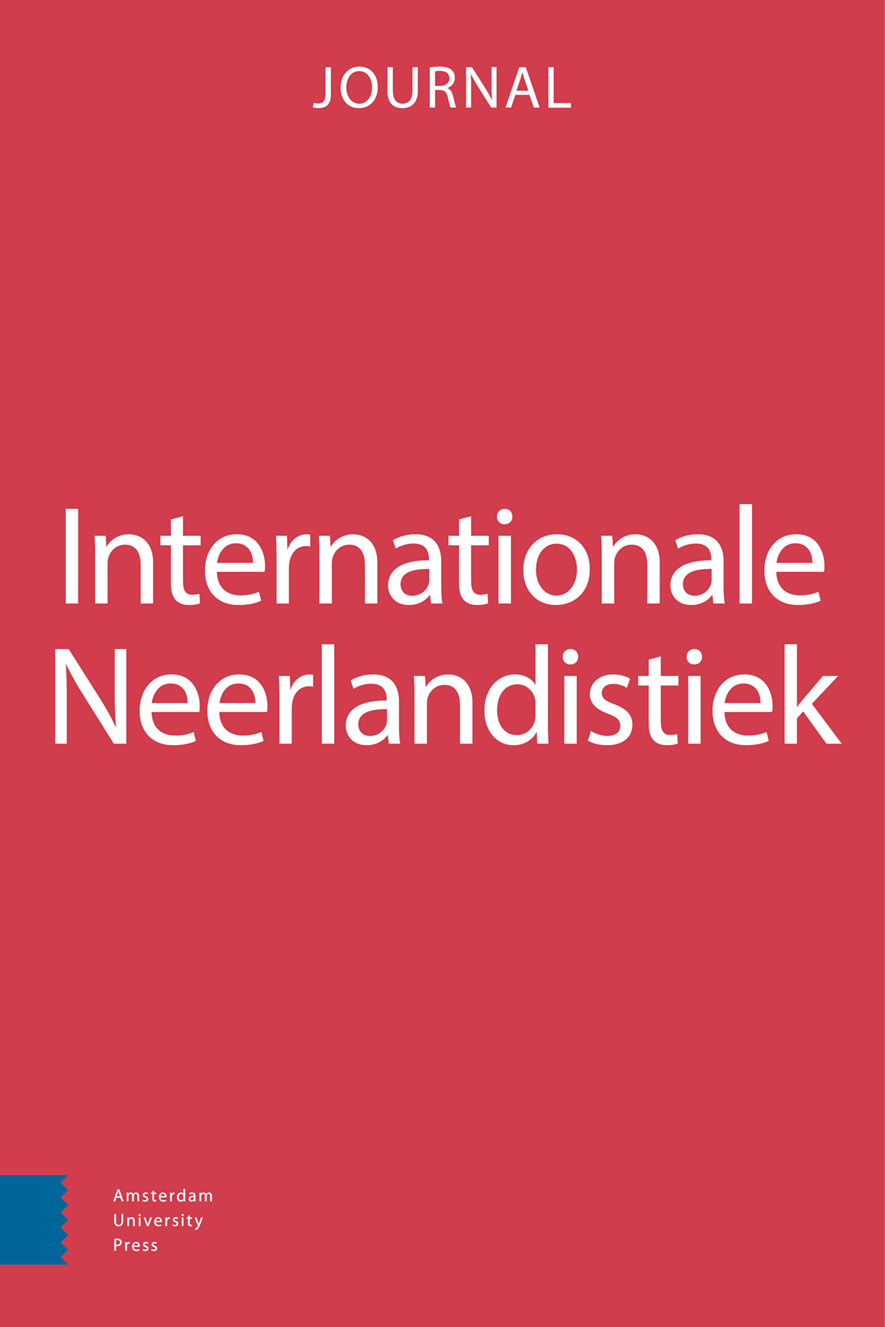- Home
- A-Z Publications
- Internationale Neerlandistiek
- Previous Issues
- Volume 56, Issue 3, 2018
Internationale Neerlandistiek - Volume 56, Issue 3, 2018
Volume 56, Issue 3, 2018
Language:
English
-
-
oa Honderd jaar theorie en onderzoek van tweedetaalverwerving
More LessAbstract This paper characterizes three views on learning and language development that successively prevailed over the last hundred years: (1) behaviorism and structuralism (1920-1960), (2) the Cognitive Revolution, including Chomsky’s generative linguistics (1960-1990), and (3) connectionism and Usage-based linguistics (1990-present). Because of the large distance between abstract constructs and empirical ob Read More
-
-
-
oa “Je ziet het pas als je het doorhebt”
More LessBy Wander LowieAbstract In spite of convincing empirical evidence for the implicit nature of second language acquisition, second language teaching is still largely based on explicit instruction. The discrepancy between research and teaching is caused by deeply rooted assumptions about language learning. One of the most critical assumptions is that there is a linear and causal relationship between explicit grammar instruction and the proce Read More
-
-
-
oa Talige diversiteit en Nederlands in de lerarenopleidingen op Curaçao en Bonaire
More LessAuthors: Maxy Bak-Piard & Sjaak KroonAbstract First-year students at the teacher training institutes for primary education and for secondary education in the subject of Dutch at the University of Curaçao generally speaking show low scores on Dutch language proficiency tests and poor study results. Bak-Piard et al. (2016) found that these poor results are related. In this contribution we will go into the language background of these first-year students and show th Read More
-
-
-
oa L2 status factor en netwerken binnen de Germaanse taalfamilie
More LessAbstract Central questions within L3 language acquisition research concern the activation of different background languages when it is the intention to use the L3. Why does the L1 serve as a source of transfer in some cases and the L2 in other cases? A number of explanations has been put forward. Some are based on structural or (psycho)typological similarities between languages while in others the L1- resp. L2-dominance Read More
-
-
-
oa Verwerving van de Nederlandse positiewerkwoorden
More LessAuthors: Annika Johansson & Rogier NieuweboerAbstract This article aims at looking into the acquisition of the Dutch posture verbs staan ‘stand’, zitten ‘sit’ and liggen ‘lie’ by learners of Dutch at Stockholm University and Helsinki University. Firstly, this study presents a systematic semantic description which gives an outline of the uses of the Dutch posture verbs based on categories originating from Lemmens & Perrez (2010) en De Knop & Perrez (2014). Secondly a pilot study Read More
-
Volumes & issues
Most Read This Month
Article
content/journals/18769071
Journal
10
5
false
en


